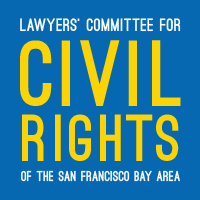Traffic court is a judicial dead end for California’s working poor
By Oren Sellstrom
If you subscribe, you can read the original article on The Daily Journal.
When we think of influential courts, the Supreme Court typically comes to mind first. Yet for many low-income individuals, a court much further down the judicial food-chain actually holds the most sway over their lives. Traffic court — which for the majority of Californians is just a nuisance they may have to contend with at some point — wields enormous influence over the lives of poor people. In fact, when run like a bureaucracy rather than as a means of delivering justice, traffic court has the power to block low-income individuals from ever extricating themselves from poverty and achieving self-sufficiency.
Consider the case of “Maria A.,” a single mother in San Francisco who until recently had been supporting her family by working in construction, a job that requires a driver’s license. When she received three traffic tickets, she was unable to pay them immediately since she was using her limited income to feed and clothe her two children. As a result, the San Francisco traffic court ordered her driver’s license suspended and placed her in the ultimate Catch-22: She must pay off her entire debt before the court will reinstate her license. But without her license, her employer won’t hire her back, so she has no way of paying off her debt. Nor will the court allow her to perform community service, since her debt has been sent to collections. In fact, she cannot even go before a judge to request any kind of common-sense solution to this vicious cycle; unless she posts bail for the full amount she owes, the court will not even schedule her matter.
Maria’s situation is unfortunately not uncommon. As the Brookings Institution has found, driver’s license suspensions are a direct cause of unemployment for the working poor. Not only does the suspension impact a person’s ability to travel to work, many jobs require driving as a core function, such as delivery or transport, or as a necessary component of the work, such as travel between job sites. For many other employers, a valid driver’s license is seen as an indicator of reliability, and applicants without one are simply screened out of the applicant pool. Without the ability to find work, many of these individuals have no other option but to rely on public assistance.
This outcome benefits no one. Those saddled with court debt and effectively prevented from working begin to view the court system not as a rational institution that furthers justice, but rather as a bureaucratic obstacle that stands in the way of any attempt at self-sufficiency. Taxpayers end up footing the bill for public aid — often for individuals who have jobs waiting for them, if they could only get their licenses back. And most ironically, the court system — which theoretically suspends licenses as a way to increase debt collection — puts itself in a position where it will never get paid. You can’t squeeze blood from an unemployed stone.
Are there solutions to these problems? Yes, and they are surprisingly easy to implement. For example, some counties, such as Alameda County, lift driver’s license suspensions if individuals can demonstrate that they need their license to gain or keep employment and if they set up a plan to use the resulting income for repayment. That makes sense — give someone the opportunity to get a job, so that she will have money to satisfy her debts. Other counties, such as Contra Costa County, have “clear your record” days where judges hear the cases of low- income people who have accrued court-related debt during rough periods in their lives (e.g., unemployment, homelessness, addiction), but are now ready to turn their lives around. Rather than barring the courthouse door unless individuals pay off all their debts first, these courts recognize that justice sometimes requires creative thinking. These approaches are cost- effective as well, since they increase the likelihood that fines and assessments will be paid.
Unfortunately, many other traffic courts throughout the state are stuck in bureaucratic mode and can’t think “outside the box” towards this type of common-sense solution. San Francisco, for example, is actually poised to move further in the wrong direction, having recently proposed changes to its local rules that would entrench its punitive practices. Civil rights groups and social service organizations serving low-income San Franciscans recently asked the full court to reject these proposed changes, and the court will soon decide whether or not to do so.
Given the immense human cost at stake, how do traffic courts end up functioning more like single-minded debt collectors than arms of justice? Certainly bureaucracy and inertia is a part of the reason. But it is also that courts are increasingly looking at their own bottom line. In this era of budgetary cut-backs, collecting court-related debt begins to be seen not so much as a way to mete out justice but rather as a money-making mechanism to keep the courts afloat.
No one denies the need for adequate court funding — and in fact organizations serving low- income communities have been among the most vocal in making this plea. But revenue- generation cannot come at the expense of access to justice, or it threatens to undermine the integrity of the court system as a whole. Particularly where such efforts are actually counter- productive — making it more difficult for individuals to become self-sufficient and pay off their court-related debts — they must be stopped. Judicial officers must recognize the outsize influence that traffic court has over low-income people’s lives — and then work towards common-sense and cost-effective reforms.
Oren Sellstrom is legal director of the Lawyers’ Committee for Civil Rights of the San Francisco Bay Area.
